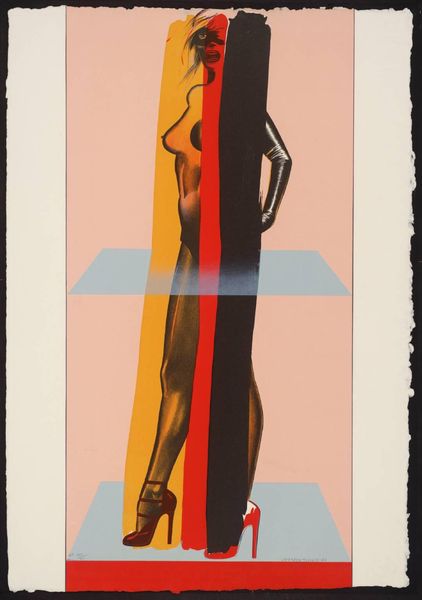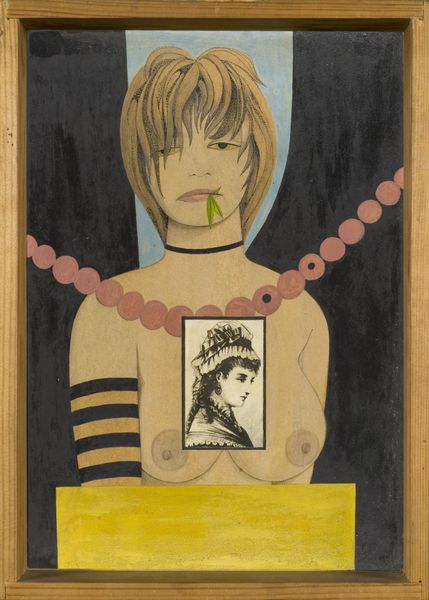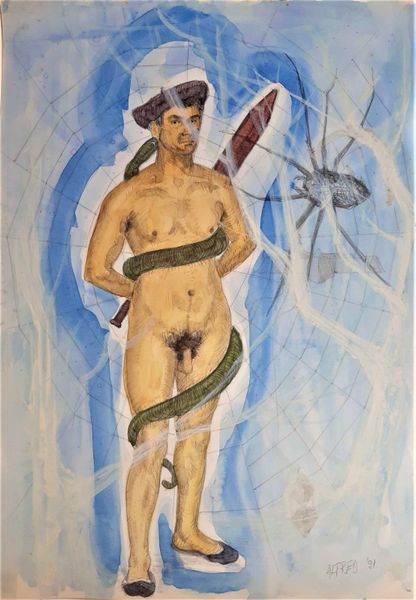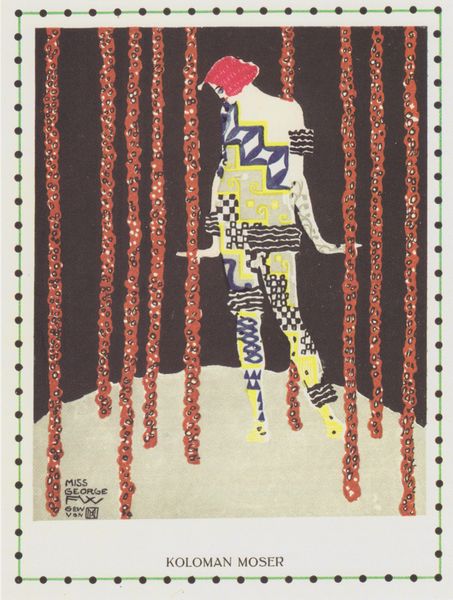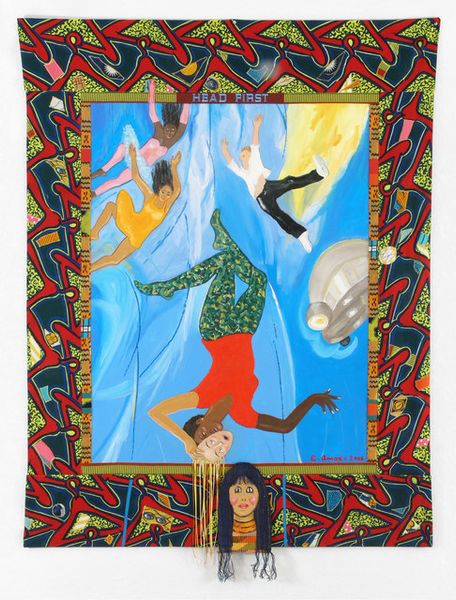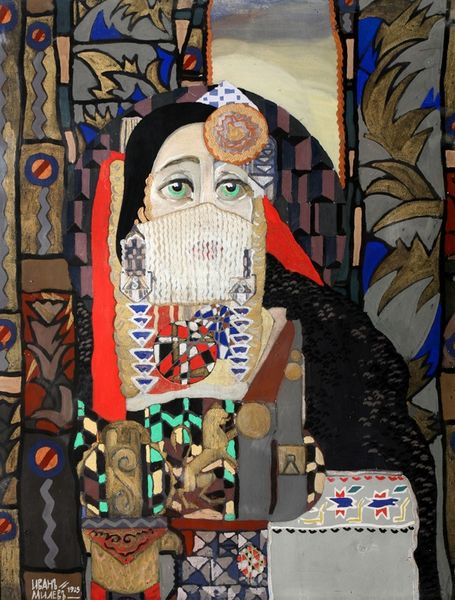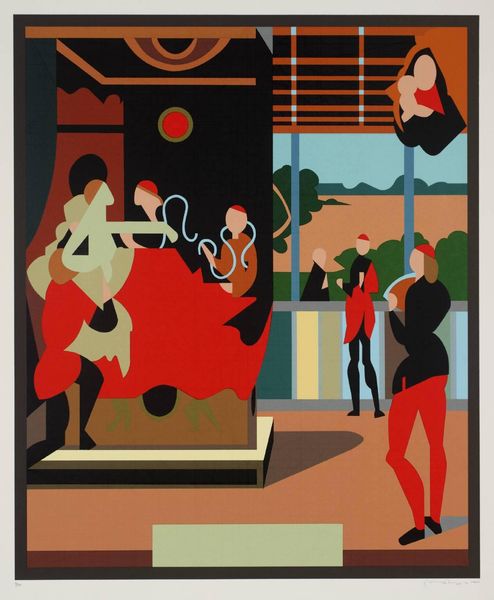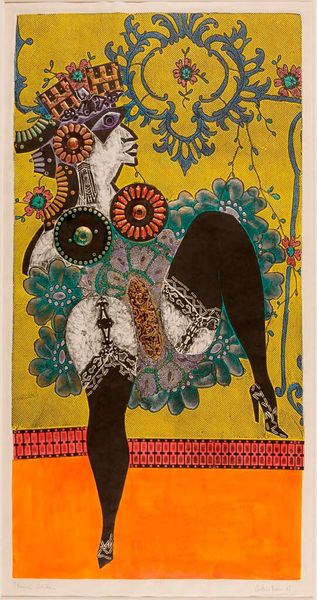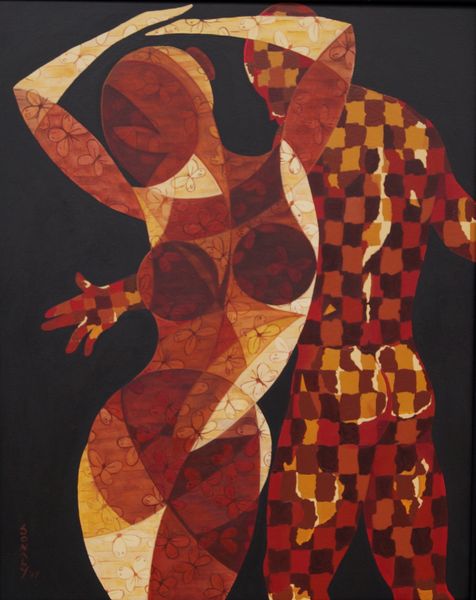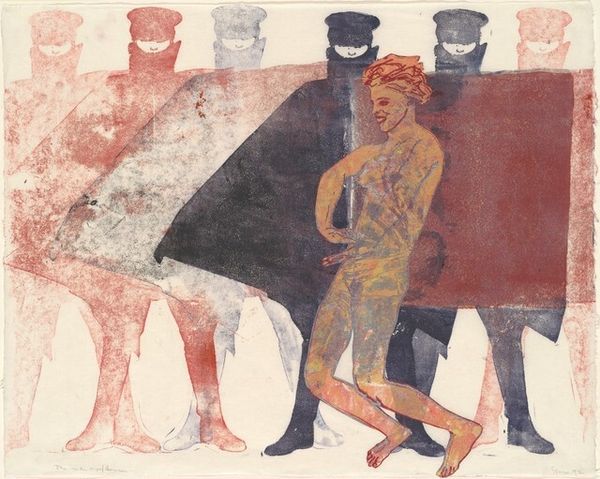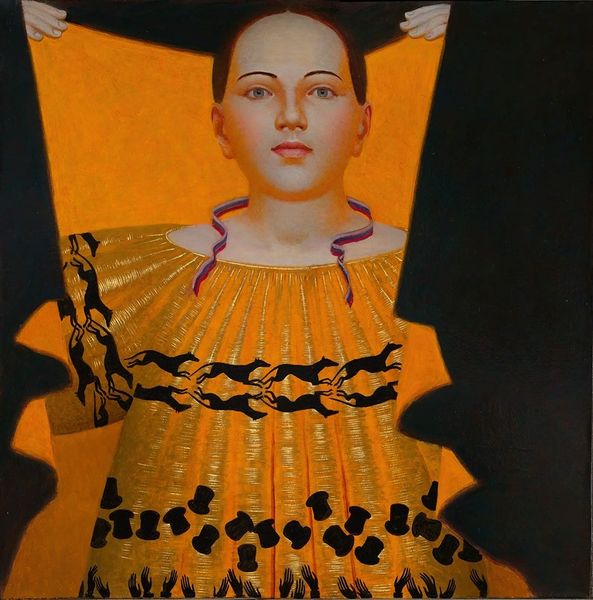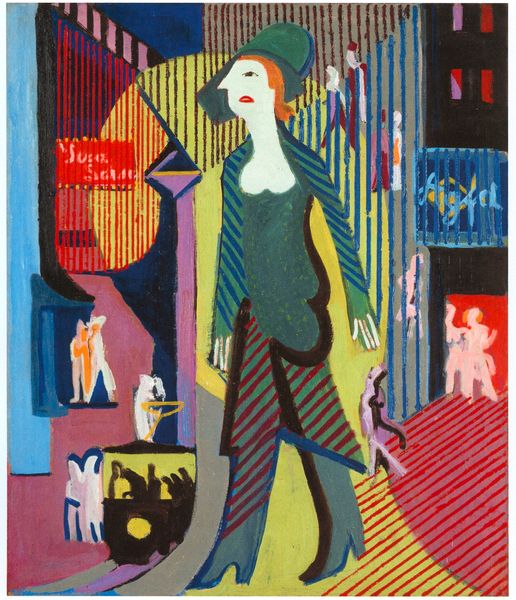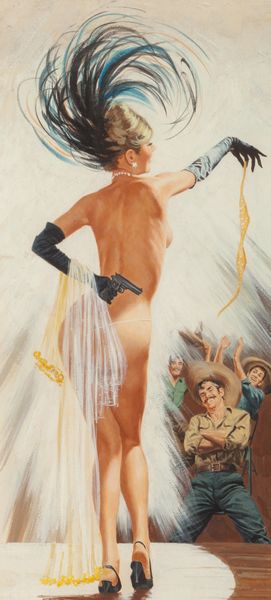
Copyright: Emma Amos,Fair Use
Curator: Emma Amos created the striking mixed-media piece "Does Black Rub Off?" in 1992, combining painting, collage, and textile elements. What's your initial read of this piece? Editor: The image has a disconcerting energy. The figure’s darkened face set against the rest of the composition feels jarring, demanding attention in a way that unsettles my assumptions. Curator: Let's unpack that unease. Amos frequently explored issues of race, gender, and class in her work. I see this work as a potent critique of how Black identity is perceived and commodified within a predominantly white art world, as well as broader society. Editor: Absolutely, the inclusion of African figure collage elements reinforces that read. I am also considering the border: a busy pattern filled with hands that frames the central painted scene. This choice of the border gives me pause. Borders often serve to contain and control meaning within artworks—how does this affect our understanding of the piece? Curator: That's a vital point. By utilizing the border in this way, she is forcing the viewer to contemplate where representation begins and ends. The repetition of hand motifs seems to ask questions about ownership and the desire to control the Black body, echoed in the blackface imagery. Editor: The historical context is also crucial here. It’s the 90’s, conversations surrounding identity politics are burgeoning. Can we consider this work as part of a larger, public conversation about how blackness is staged and consumed? Curator: Undoubtedly. The painting participates directly with the heated debates around representation during that time. Amos is actively confronting viewers with uncomfortable questions about authenticity, performance, and the pervasive nature of stereotypes, encouraging us to dismantle the structures that perpetuate these problematic portrayals. Editor: It's interesting to see how the layering of various mediums intensifies the piece's message. Considering our contemporary lens, Amos prompts critical re-evaluation of visual tropes. The unsettling power lies not in shock value, but profound social inquiry. Curator: Precisely. By creating space for introspection, Emma Amos demands we each reckon with our complicity in these narratives. Editor: A provocative, necessary intervention then, and one that continues to resonate deeply.
Comments
No comments
Be the first to comment and join the conversation on the ultimate creative platform.
